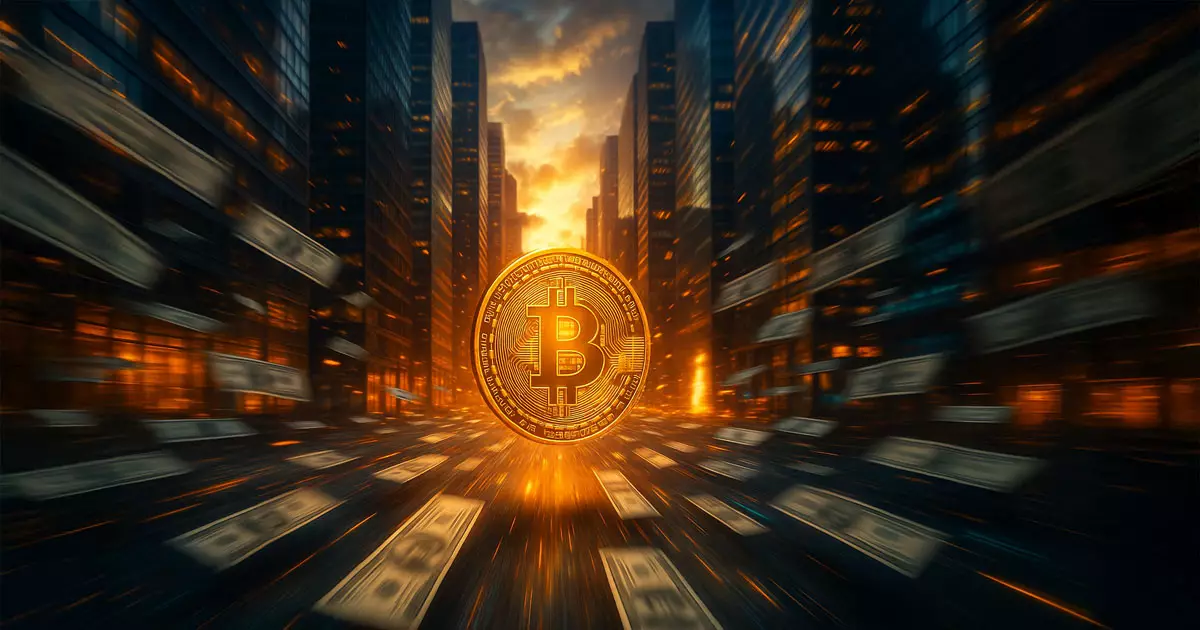Bitcoin, the cryptocurrency that transformed the financial landscape, has been showing unprecedented stability, particularly with its price hovering above $105,000 recently. However, the recent findings have indicated a marked decline in inflows to Binance, one of the largest crypto exchanges in the world. The monthly inflow has plunged to a mere 5,700 BTC, starkly underwhelming when compared to the 12,000 BTC average since 2020 and even more so against the towering 24,000 BTC during the tumultuous FTX crisis in late 2022. This situation necessitates a critical examination of market behavior and investor psychology within the cryptocurrency trading ecosystem.
The Psychology of Hodling
The term “hodl,” originally a misspelling of “hold,” has become a battle cry for Bitcoin aficionados wanting to ride out market fluctuations. The infrastructure is now seeing a clear demarcation between those who wish to accumulate and those willing to sell. The current holding phase signifies a burgeoning reluctance among both retail investors and institutional players to engage in short-term trading. This mindset becomes particularly relevant when analyzing the numbers: traders usually flood exchanges with assets when preparing to allocate or liquidate, yet the recent dip in deposits suggests an intent to hunker down, reducing immediate selling pressure.
As discussed by CryptoQuant analyst Darkfost, the occurrence of lower inflows during relatively stable prices hints at a collective strategy moving away from panic selling. From a center-right perspective, this shift aligns with a more disciplined investment ethos, deterring impulsive actions driven by market volatility and media frenzy.
The Role of Binance as a Market Litmus Test
The numbers are impactful. Binance controls a staggering 37% of Centralized Exchange trading volumes this year, making it a necessary reference point for understanding market dynamics. With lower liquidity and diminishing deposit figures, there’s a proposition that this decline indicates a broader trend of investor caution. Each inflow spike historically correlates with a price peak, and with those inflows plummeting, one must wonder if we stand on the precipice of a new support level for Bitcoin or are merely delaying the inevitable retracement.
The notion that lower inflows could precipitate a healthier market is perplexing yet compelling. Thin order books with increasing demand could lend themselves to a sturdy price floor, avoiding the type of extreme volatility that marked the early phases of Bitcoin’s journey.
Potential Dangers of a Stagnant Market
Despite the seemingly stabilizing effect of fewer withdrawals, a rise in deposits could still shake the market violently. The undercurrent of macroeconomic instability remains, and any unexpected shock could trigger fresh inflows. If traders decide it’s time to liquidate, the very low inflows observed could potentiate an unsettling scenario for market sentiment. Darkfost’s advice to monitor any rise back toward the long-run average of 12,000 BTC becomes a critical action point for responsible traders navigating this digital landscape.
In essence, while the current statistics may seem benign on the surface, they cloak a more complex narrative about the changing attitudes toward liquidity, volatility, and strategic decision-making within the cryptocurrency world. The craft of trading is transforming, potentially leading to either a more resilient investing framework or an ominous buildup to another liquidity crisis.















